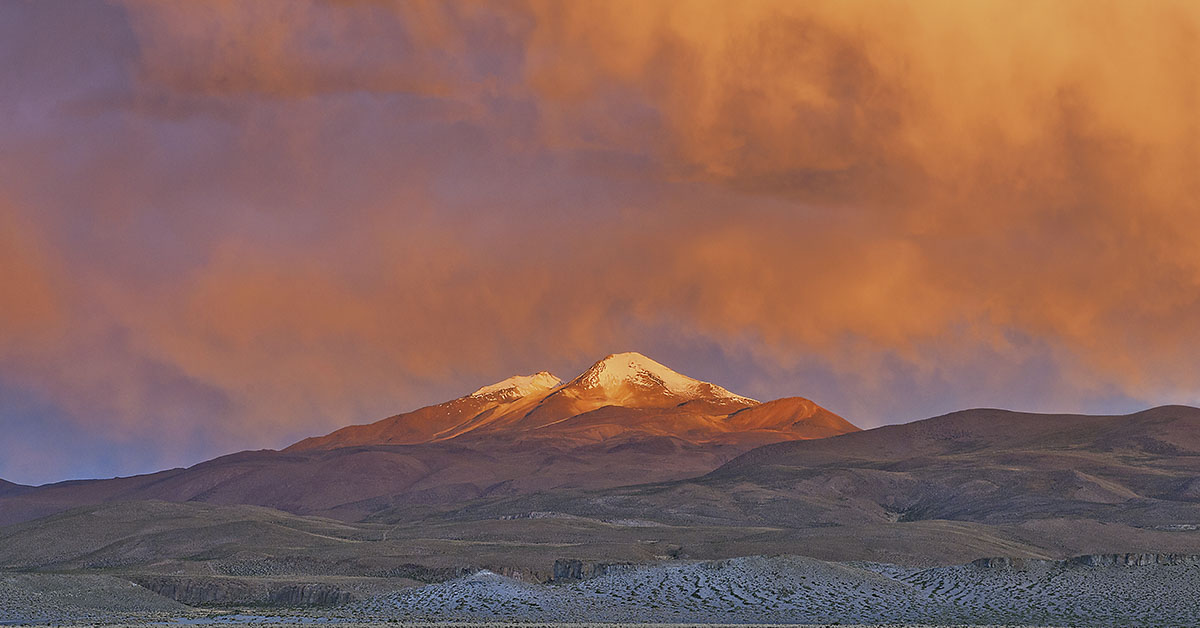In Bolivia’s remote Andes, an ancient volcano is stirring, and scientists are watching closely. Known as a Zombie Volcano, Uturuncu has remained dormant for 250,000 years. Yet now, it’s showing unexpected signs of life. From small daily earthquakes to ground swelling and gas emissions, this sleeping giant seems to be shifting. While it is not erupting anytime soon, its strange activity gives scientists a rare look inside a volcano once thought dead. Let’s explore what makes this phenomenon so unique and why it is changing how we understand dormant volcanoes.
A Volcano That Refuses to Die
The Uturuncu Volcano is no ordinary mountain. It is classified as a stratovolcano and last erupted long before modern history. Still, it is not silent. For years, researchers have observed unusual movement beneath its surface. Earthquakes, rising ground, and escaping gas suggest something deeper is happening. Scientists call it a Zombie Volcano because it shows life despite its long slumber. Rather than fresh magma, it seems driven by underground fluids pushing upward, which keeps this volcano strangely active.
The Strange “Sombrero” Uplift
One of this Zombie Volcano’s most puzzling features is its ground deformation. GPS and satellite data reveal that the center of the volcano is rising about one centimeter each year. Meanwhile, the land around it is sinking. This creates a shape scientists call a “sombrero.” Such a pattern is rare, especially for a dormant volcano. It suggests something pressurized, likely fluids or gases, is moving upward from deep within the Earth’s crust.
Each day, this mysterious mountain experiences three to four small earthquakes. At times, the region sees swarms of up to 60 quakes in a single day. These tremors are shallow and closely tied to ground movements. Scientists believe underground fluids are forcing their way through rock layers, causing these frequent shakes. This behavior stands out. Most dormant volcanoes remain quiet for centuries. The Zombie Volcano clearly does not follow the rules.
Read More: Supervolcano Shows Signs of Waking, Scientists Say It Could Affect Entire Planet
Gas Leaks and Underground Fluids
At its summit, the volcano releases steam and gas through vents called fumaroles. These gases include carbon dioxide and hydrogen sulfide. While not dangerous at the moment, they indicate heat and pressure below. The temperatures are warm but not hot enough to suggest magma is close to the surface. Still, the steady release of gas points to an active hydrothermal system inside the Uturuncu Volcano.
Beneath the surface lies a vast underground feature called the Altiplano-Puna Magma Body. This massive, partially molten rock layer sits about 20 kilometers below. Scientists believe hot, salty fluids called brines are rising from this layer. These fluids move upward and press against the crust, which fuels ground uplift and minor quakes. Though no magma is rising, the process keeps this Zombie Volcano geologically active.
No Magma, No Eruption for Now
Despite all this underground movement, the Zombie Volcano is not preparing to erupt. There is no sign of fresh magma heading toward the surface. Instead, hot fluids are creating pressure and heat without explosive results. This makes the site a valuable study area. Scientists can learn how dormant volcanoes behave when fluids move beneath them. For now, it is not about eruption. It is about understanding what is stirring underground.
What is happening under the surface feels like a slow pulse. Fluids and gases rise, press, and vent, almost like a heartbeat. This gentle movement causes the ground to breathe. It creates small quakes and subtle changes in elevation. Although it is not erupting, the volcano is very much alive. This slow heartbeat reveals a side of volcanism we rarely witness.
Read More: Trees React to Volcano Activity Before Eruptions, NASA Finds
Why Scientists Are Excited, Not Worried
The changes here are not cause for alarm. Instead, they offer a chance to study volcanic activity without immediate danger. Researchers are fascinated because the Uturuncu Volcano breaks expectations. It challenges what we know about dormancy and reawakening. By monitoring it, scientists hope to improve eruption forecasts for other volcanoes. The data collected here could help protect lives elsewhere.
This reawakening raises a big question. Could other long-silent volcanoes also be quietly active? Around the world, ancient volcanoes dot the landscape. With better tools like satellite imaging and seismic sensors, scientists may uncover more cases like the Zombie Volcano. These quiet giants may not erupt, but they still move, breathe, and reveal Earth’s hidden energy.
A Sleeping Giant That’s Stirring
This incredible site shows that even ancient giants can awaken in surprising ways. Though silent for millennia, it now pulses with life beneath the surface. With each tremor and gas release, it teaches us something new. This is not a volcano on the verge of eruption, but it is far from dead. As science advances, the Zombie Volcano reminds us that Earth never truly sleeps.
Read More: Scientists Discover 2.6 Million Golden Eggs Near Underwater Volcano

